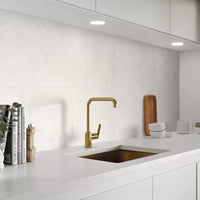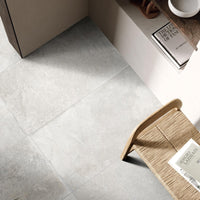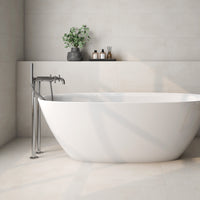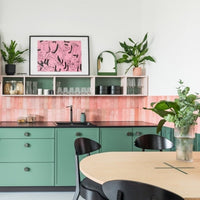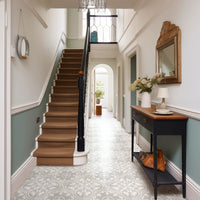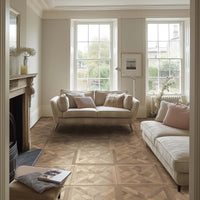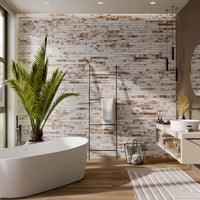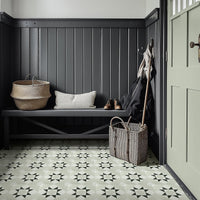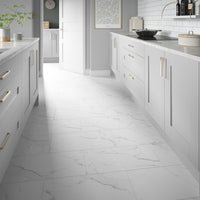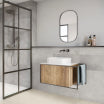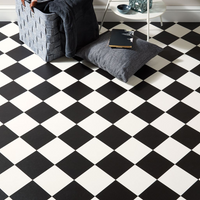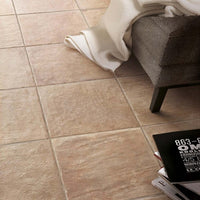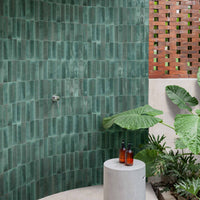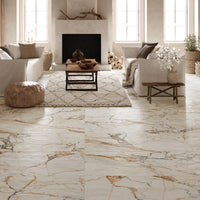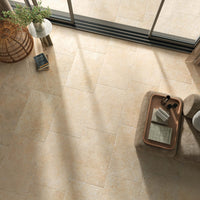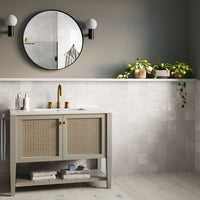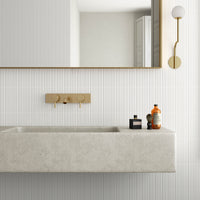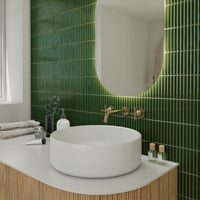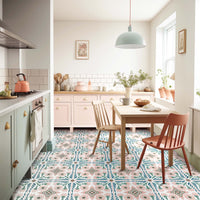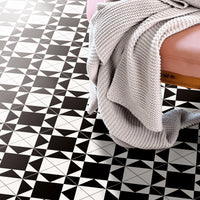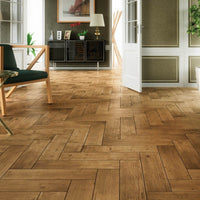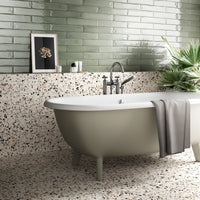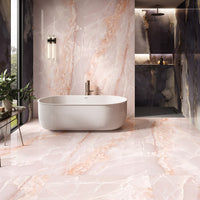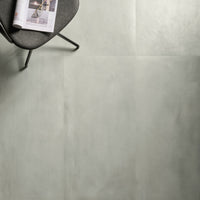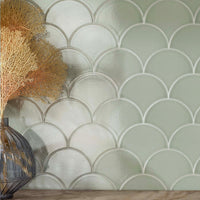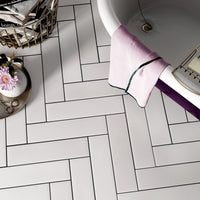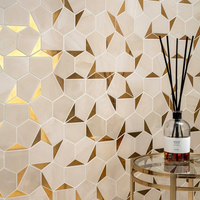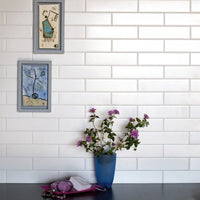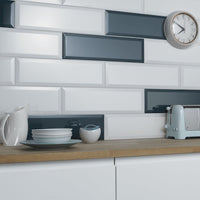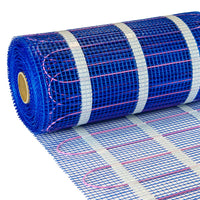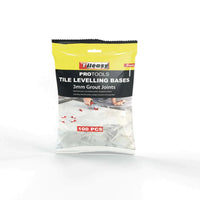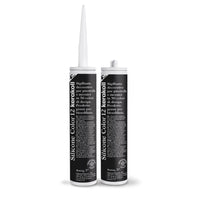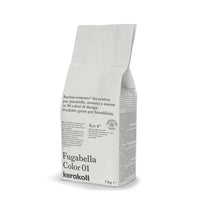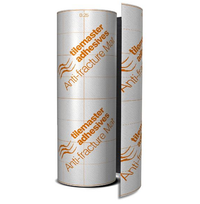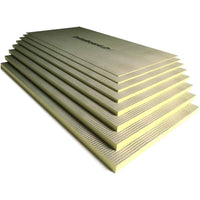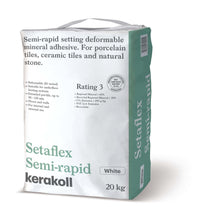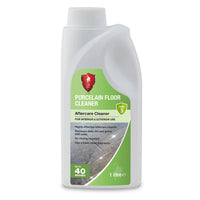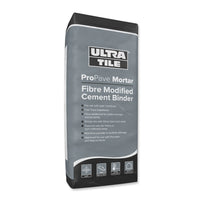Let’s face it – when it comes to furnishing your home, real wood floors are a pretty safe bet. With their neutral tones and natural warmth, they’re usually top of the design tree, so to speak. But where Mother Nature scores on style, she loses on practicality – living with natural timber can be a real labour of love.
That’s where our wood effect tiles come in. Combining the dashing good looks of timber with the practicality of porcelain, they’re the perfect choice for busy family homes – little wonder why they’re hot property in the world of interiors right now!
As they say, the proof is in the pudding so let’s look at some great reasons why you should choose wood tile over the real deal next time you’re looking to renovate your home.
Incredibly Realistic
Forget the faux finish and tacky laminates – wood effect tiles look seriously good. And by that we mean, Seriously. Side-by-side, they’re almost impossible to tell apart from natural wood. Don’t believe us? Take a look at the image below – can you tell which is tile and which is timber? Have a guess and read on to find out – the answer’s at the end.
All our porcelain planks are made in high tech plants using the latest ‘digital printing’ technology. Essentially, this means you get a high-definition replica of actual wood, with all the bad bits airbrushed out. So that’s hello to gorgeous shading, knots and grains; goodbye to excessive variance, splits and cracks. In the words of a happy customer, it’s ‘flooring without the flaws’.
Virtually waterproof
Wood might be incredibly popular for kitchen floors, but in truth it’s a recipe for disaster. Although the phrase “wood floors and water” might have a pleasing ring to it, they’re actually the biggest mismatch since chalk met cheese. It just so happens that moisture is the enemy of a solid wood floor – it’ll make your planks warp, shrink and expand, after it’s stained them, of course.
Now if you’ll excuse me for getting all technical, it’s like water off a duck’s back when it comes to porcelain planks. Porcelain is virtually waterproof – boil a tile in a vat of liquid gold and it’ll come away just fine. So everyday spills and splashes are a doddle; they’ll just sit on the surface and won’t soak through, opening up a whole new world of design opportunity where you’d normally only be crazy to use natural timber – we’re thinking bathrooms and wetrooms.
Going back to kitchens, plenty of us have suffered at the hands of a leaking washing machine or a tap left unattended. Installing wood effect tiles gives you complete peace of mind – a major spill can be mopped up in seconds with no lasting damage. We’ve even had customers with tiled floors that have survived floods completely unscathed!
Inside Outside living
One of the major trends in interiors right now is for ‘inside outside’ living and this is where wood tiles can really come into their own. We’d never advise using real wood outside, but tiles can take everything the British weather can throw at them – come rain or shine, wind or snow. Which is just great if you’re looking to continue your new floor onto your patio.
Just be sure to choose a tile with texture, or apply a good-quality anti-slip treatment to your tiles.
IMAGE
Super easy to live with
Gorgeous oak beams might look great in photoshoots and magazines but here in the real world, they have to contend with busy lives, four-legged friends and baby-led weaning. And while mucky paws, smashed avocado and toddler’s toys might scratch or stain soft floorboards, they’ve met their match when it comes to wood tiles.
Porcelain is super hard and durable – it takes A LOT to damage a tile. Unless you plan on taking a hammer and chisel to your new floor, daily life isn’t going to cause much trouble. Most stains can be easily wiped away with just warm water and unlike soft floorboards, it’s ridiculously hard to scratch or chip porcelain planks.
Oh, and those natural wood floors are like high-maintenance divas. So unless you like getting down on your hands and knees every now and then it’s best to stick to porcelain planks – they’re low maintenance so you’ll never need to re-oil or seal your tiles. Never, ever, ever!
Perfect for parties!
Because wood tiles are so hard, they’re ideal for what we call ‘high traffic areas’ – hallways, living spaces and the like. If you’ve ever paid a fortune for expensive flooring but cringe at the thought of having friends over for dinner then you’ll love the benefits of porcelain tiles. Throw a party and you won’t have to worry about your delicate floor being pock-marked by dancing shoes and stilettos – even a spilt glass of wine left overnight isn’t going to cause any damage!
Eco-savvy option
To us, cutting down trees is a big no-no. Not only do they provide a home for birds and wildlife, they’re also a natural store of carbon dioxide. So although trees might be ‘renewable’, we say leave them be – and anyway, our wood effect tiles offer a planet-friendly option.
We only source our porcelain planks from highly regulated factories in Spain and Italy – most of our tiles contain recycled material and contain no waxes or sealants that could release dangerous VOCs into the environments. Natural doesn’t necessarily mean wholesome!
And with tiles being so durable, your new floor can easily last generations rather than being replaced every few years. To us it’s a no brainer; choose tiles if you care about sustainability!
Good for warm toes and healthy lungs
Given there’s so many benefits to wood effect tiles, it’s easy to overlook the fact they’re perfect to use with underfloor heating. If you don’t already have underfloor heating in your home then you’re missing out! Warm toes, a nicer ‘radiant’ heat and an end to cold-spots, what’s not to like? And furthermore, you can also banish those ugly radiators to the scrapheap – we’ll have sleek, efficient heating mats, thank you!
On the other hand, natural wood and underfloor heating is a non-starter. As we’ve mentioned before, natural timber can be pretty fussy. Heat wood up and it expands; cool it down and it contracts. You can probably see where we’re going here – pretty soon you could be staring at a floor full of bows and gaps. Not exactly the look you wanted!
It would also be prudent of us to stress how wood effect tiles and underfloor heating can have health benefits, especially if a family member suffers from asthma. Traditional radiators create draughts that essentially blow dust around – underfloor heating reduces these and helps maintains a healthy level of air humidity.
And now.. the downsides!
In the interests of fairness, it’s only right that we should point out the negatives of wood effect tiles compared to their natural cousins. We’ll be pretty honest, it’s pretty difficult to think of any, but here goes:
They’re difficult to install
Sure, a real wood floor is a little easier to install – especially if you’re a dab hand at DIY. Tiles are a bit more difficult, unless you’re Handy Andy. But for the rest of us, we’d always advise calling in a pro – they’ll have the right tools, experience and know-how to get the perfect finish. And anyway, aren’t weekends for relaxing rather than cursing your spirit level?
Read our guide to finding the perfect installer here.
Tiles are cold
We hear this quite a lot and to be fair, on a cold winter’s day any tile is never going to feel as cosy as a soft carpet. That’s why we always recommend using underfloor heating, especially for busy rooms. And why not throw down a rug or two? Check out our Pinterest board and discover how tiles and rugs are natural bedfellows!
Planks can bow
We won’t shy away from the fact that tiles can bow – it’s a natural result of the firing process. A tile that curves slightly up towards the middle isn’t necessarily defective, but it does mean that we – and the rest of the tile world – recommend laying tile planks with a maximum 33% offset joint to reduce any chance of ‘lippage’.
Personally speaking, tiles laid this way look far more natural than wood planks laid in a ‘brickbond’ pattern – have a look at the image below and we’re sure you’ll agree!
And…. It’s a knockout!
Still with us? Good! So let’s sum it all up.
On the one hand, we have natural timber. Pricey, cranky and downright difficult to deal with.
And on the other, we have the new kid on the block, wood effect tiles. Good looking, flexible and a great all-rounder. It’s a knockout!
